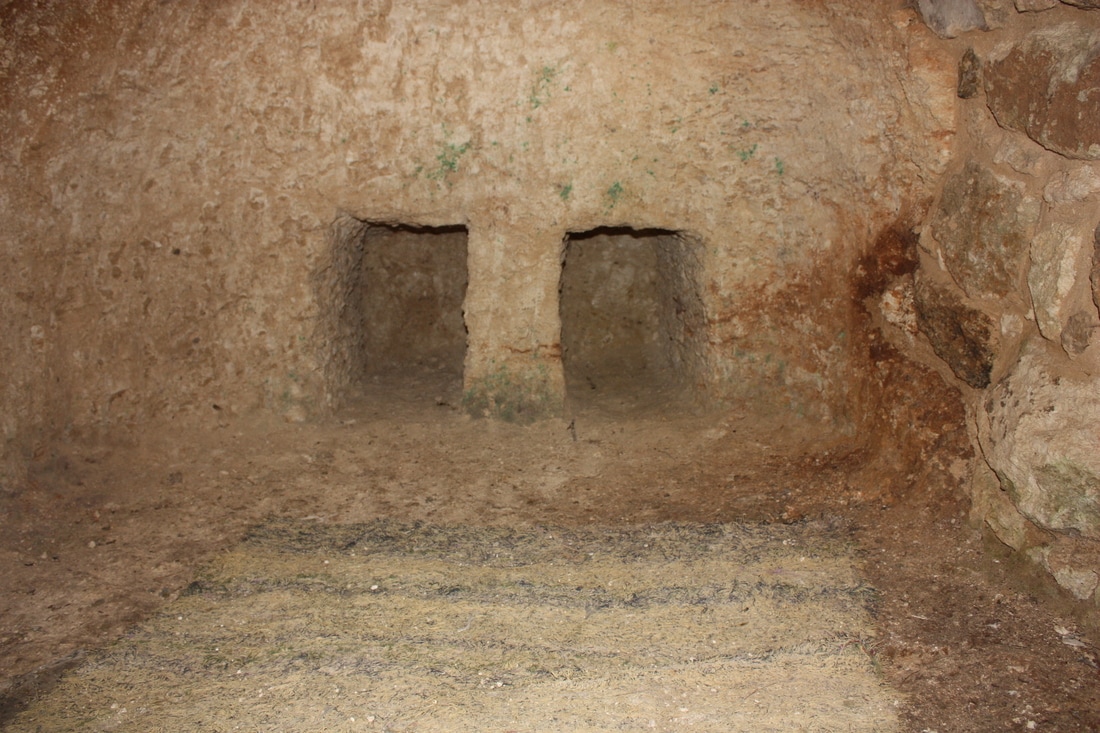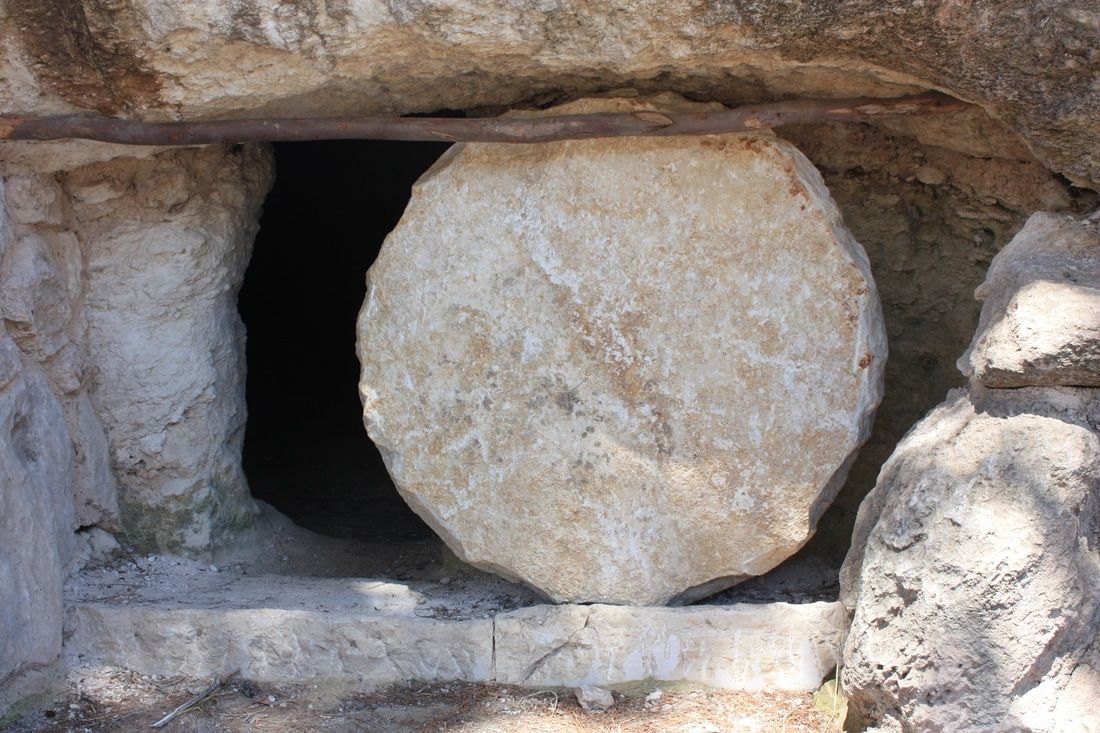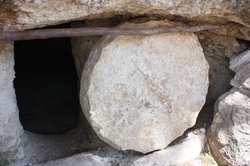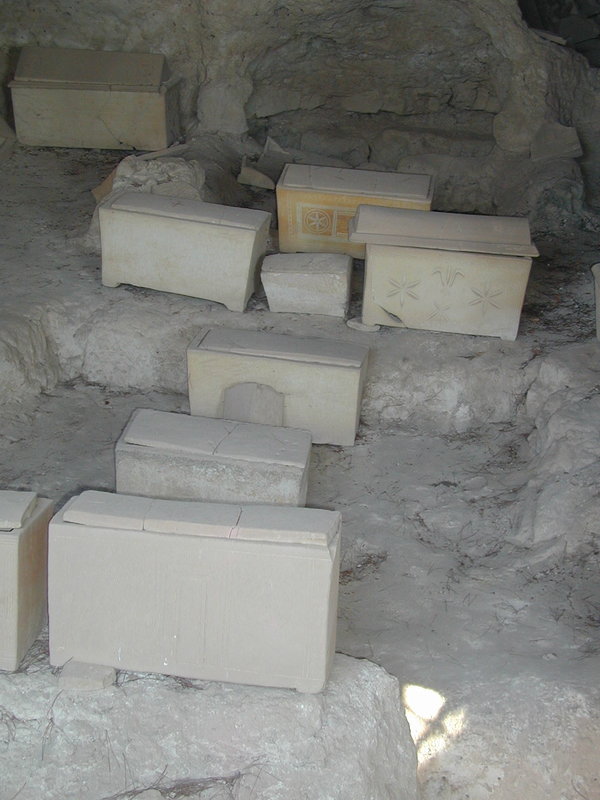Letter from KIP's Mum - Jewish First Century Funerals (A3)
Hello everyone!
The Liturgical Year tells me you are learning about Easter and the death and resurrection of Jesus. It's a time of sorrow and reflection but also of great joy! After the Easter break you will examine the resurrection of Jesus; now you are looking at the three days that lead up to Jesus’ resurrection: his entry into Jerusalem (which we celebrate on Palm Sunday), his last Passover meal (which we remember on Holy Thursday) and his crucifixion and death (which we acknowledge on Good Friday).
As you learn about what happened when Jesus died (it is in Matthew’s Gospel at Mt 27:27-56) some information on how people were buried in the first century might help you understand what he says. By using historical, archaeological and biblical records we can gain a picture of what probably happened to Jesus after his death. I’ve included some photos too so you can see what things might have looked like.
Although the Egyptians had a much more elaborate system of burying the dead, ancient Jews also took the practice very seriously. So important was a ‘decent burial’ that it ranked as an act of charity given to a stranger, alongside providing food and clothing for the poor. And, you could insult someone badly by suggesting that their body would not be put properly into the earth after they died. So, what happened to the body of someone who had died was important.
After a person died their eyes were closed and their body was washed and anointed with oil and perfumes. Their hands and feet were then wrapped in linen bands. Their whole body, dressed in a favourite garment, was then wrapped in cloth. Spices of myrrh and aloes were placed in the folds of the garment to keep the body fragrant. The body was not placed in a coffin as it would be today; instead it was carried to its place of rest on a bier (a wagon a bit like a trolley). All this usually happened on the day the person died.
Most people (even today) prefer to be buried in their own town or country. This was true of first century Judaism and so many families had their own tomb for family members. Most often tombs were built in a natural cave or a chamber cut into soft rock.
The burial took place in two stages. In the first stage the body of the person who had died, now washed, perfumed and wrapped would be placed in the tomb, either on a rock shelf carved into the sides, or placed directly on the floor. It would be left there.
The Liturgical Year tells me you are learning about Easter and the death and resurrection of Jesus. It's a time of sorrow and reflection but also of great joy! After the Easter break you will examine the resurrection of Jesus; now you are looking at the three days that lead up to Jesus’ resurrection: his entry into Jerusalem (which we celebrate on Palm Sunday), his last Passover meal (which we remember on Holy Thursday) and his crucifixion and death (which we acknowledge on Good Friday).
As you learn about what happened when Jesus died (it is in Matthew’s Gospel at Mt 27:27-56) some information on how people were buried in the first century might help you understand what he says. By using historical, archaeological and biblical records we can gain a picture of what probably happened to Jesus after his death. I’ve included some photos too so you can see what things might have looked like.
Although the Egyptians had a much more elaborate system of burying the dead, ancient Jews also took the practice very seriously. So important was a ‘decent burial’ that it ranked as an act of charity given to a stranger, alongside providing food and clothing for the poor. And, you could insult someone badly by suggesting that their body would not be put properly into the earth after they died. So, what happened to the body of someone who had died was important.
After a person died their eyes were closed and their body was washed and anointed with oil and perfumes. Their hands and feet were then wrapped in linen bands. Their whole body, dressed in a favourite garment, was then wrapped in cloth. Spices of myrrh and aloes were placed in the folds of the garment to keep the body fragrant. The body was not placed in a coffin as it would be today; instead it was carried to its place of rest on a bier (a wagon a bit like a trolley). All this usually happened on the day the person died.
Most people (even today) prefer to be buried in their own town or country. This was true of first century Judaism and so many families had their own tomb for family members. Most often tombs were built in a natural cave or a chamber cut into soft rock.
The burial took place in two stages. In the first stage the body of the person who had died, now washed, perfumed and wrapped would be placed in the tomb, either on a rock shelf carved into the sides, or placed directly on the floor. It would be left there.
A stone, shaped rather like a coin, would be rolled over the entrance as a kind of door. The body would then lie undisturbed for months – sometimes up to a year!
The second stage occurred about a year later when a member of the family would come back to the tomb to collect the, now, dry bones and to place them into a stone box called an ossuary. And, as generations of the same family would used the same tomb, ossuaries were then put along the sides of the tomb or put into a small chamber carved out of the side of it.
Now it’s your turn….
As you read Matthew’s account of the passion of Jesus remember who Matthew was writing for and what he wanted them to know. Don't forget, it’s not a report, it's a narrative!
Happy reading…
KIP’s Mum
- How does Matthew record Jesus’ death and burial? Does it describe some of the practices common in Jesus’ life?
- Why might Simon have given his family tomb for the body of Jesus?
- Why do you think the women might have had to come on the Sunday morning to perfume the body?
- Why do you think Matthew tells us that some guards stood outside the entrance to the tomb?
As you read Matthew’s account of the passion of Jesus remember who Matthew was writing for and what he wanted them to know. Don't forget, it’s not a report, it's a narrative!
Happy reading…
KIP’s Mum
Back to Back to Letters from KIP's Mum



